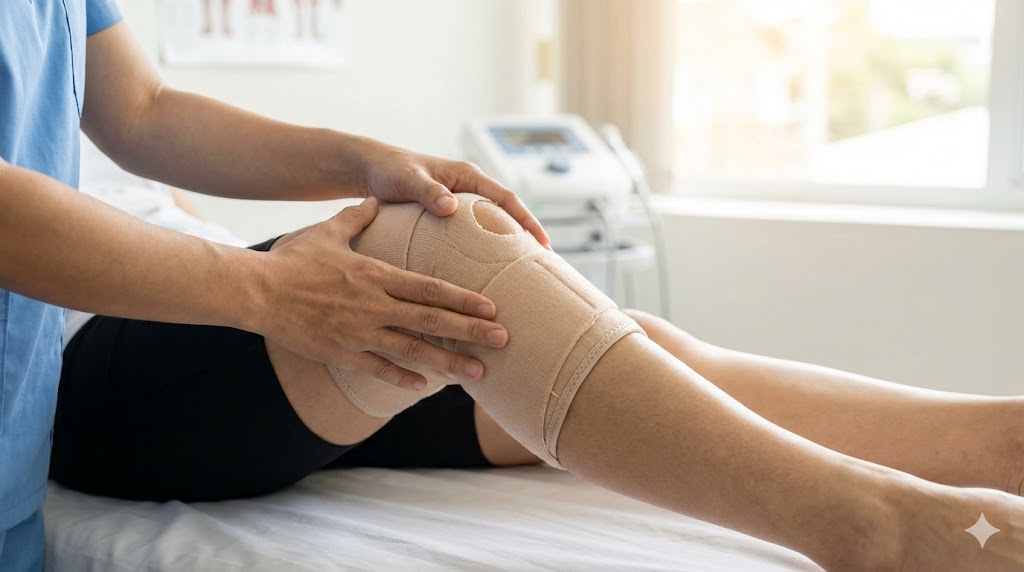

2. July 2019
physiotherapy treatment and rehabilitation after orthopaedic surgery
Physiotherapy treatment and rehabilitation after orthopaedic surgery is a structured clinical process designed to restore muscle strength, joint mobility, and functional movement following procedures like joint replacements or ligament repairs. Without this specialized post-operative care, patients face significant risks of permanent stiffness, muscle atrophy, and a delayed return to daily activities.
Surgery corrects the structural problem, but rehabilitation is what restores your quality of life. Whether you have undergone a total knee replacement, ACL reconstruction, or spinal surgery, the success of the procedure relies heavily on what happens in the weeks and months afterward. At CK Physio, we partner with leading West London surgeons to deliver evidence-based recovery plans that help you regain your independence safely.
Why Professional Rehabilitation is Critical
Following orthopaedic surgery, the body’s natural response involves inflammation, pain, and the formation of scar tissue. While this is part of healing, it can lead to restricted movement if not managed correctly. Professional physiotherapy treatment intervenes to guide this healing process.
Attempting to recover without guidance often leads to "compensatory patterns"—where patients change how they move to avoid pain—which causes new injuries elsewhere. A Chartered Physiotherapist ensures you load the tissues correctly, protecting the surgical site while stimulating recovery.
The 4 Stages of Post-Surgical Recovery
Effective rehabilitation follows a progressive timeline. While every patient is unique, a typical orthopaedic recovery plan at CK Physio moves through these distinct phases:
- Phase 1: Protection and Pain Management (Weeks 0–2). The focus is on reducing swelling and protecting the surgical repair. We use gentle passive movements and may employ electrotherapy to manage acute pain without heavy reliance on medication.
- Phase 2: Activation and Mobility (Weeks 2–6). We begin restoring range of motion. The goal is to prevent stiffness and "wake up" muscles that may have weakened due to inactivity.
- Phase 3: Strengthening and Loading (Weeks 6–12). As the surgical site heals, we increase resistance. This phase is crucial for rebuilding the muscle mass required to support the joint long-term.
- Phase 4: Return to Function (Week 12+). We tailor exercises to your specific goals, whether that is returning to competitive sports, gardening, or walking the dog pain-free.
Advanced Modalities for Faster Healing
Modern physiotherapy extends beyond simple exercises. At CK Physio, we integrate advanced technology to accelerate tissue repair during the rehabilitation process.
Shockwave Therapy for Complications
Sometimes, recovery is complicated by tendon pain or slow-healing soft tissue. Shockwave therapy is a non-invasive treatment that uses acoustic waves to stimulate blood flow and cell regeneration. It is particularly effective for patients who develop tendinopathy during their recovery or have lingering soft tissue restrictions that manual therapy alone cannot resolve.
Electrotherapy for Pain and Muscle Activation
Electrotherapy is frequently used in the early stages of post-op rehab. It serves two vital purposes: relieving pain by blocking pain signals to the brain (TENS) and stimulating muscles that have "shut down" after surgery (NMES). This allows patients to begin moving sooner and with greater confidence.
Home Visits: Recovering in Comfort
For many orthopaedic patients—particularly those recovering from hip or knee replacements—traveling to a clinic is physically challenging or prohibited due to driving restrictions. This barrier often leads to missed sessions and stalled progress.
To solve this, CK Physio offers specialist home visits across Ealing, Hanwell, and West London. Our physiotherapists bring the necessary equipment to your home, ensuring you receive the same high standard of care without the stress of travel. This consistency is often the difference between a good recovery and a great one.
Conclusion
Orthopaedic surgery provides a new lease on life, but it is the rehabilitation that dictates how well you live it. By engaging with a comprehensive physiotherapy programme immediately after your procedure, you minimize pain and maximize your long-term mobility.
The journey from the operating theatre to full fitness requires patience, expertise, and a tailored plan. Contact CK Physio today to discuss how we can support your specific physiotherapy treatment and rehabilitation after orthopaedic surgery.
Frequently Asked Questions About Physiotherapy Treatment and Rehabilitation After Orthopaedic Surgery
How soon after surgery should I start physiotherapy?
Most orthopaedic surgeons recommend starting physiotherapy treatment as soon as you are medically stable, often within 24 to 48 hours after the procedure. Early mobilization is critical to prevent scar tissue formation, reduce the risk of deep vein thrombosis (DVT), and jumpstart muscle activation.
Can I have post-surgical physiotherapy at home?
Yes, home visits are highly recommended for the initial stages of rehabilitation when mobility is limited and driving is not permitted. CK Physio provides specialist home-based rehabilitation in Ealing, Hanwell, and West London to ensure you receive consistent care without the stress of travel.
Is post-operative physiotherapy painful?
You may experience some discomfort as you begin moving a joint that has undergone trauma, but physiotherapy should not be intensely painful. Your physiotherapist will manage your pain levels using manual techniques and modalities like electrotherapy to ensure you can perform the necessary exercises comfortably.
Does insurance cover post-surgery rehab?
Most major UK health insurers, including BUPA and AXA, cover physiotherapy treatment and rehabilitation after orthopaedic surgery as it is considered a medical necessity. CK Physio is registered with all major insurance providers and can assist with the authorization process.
What happens if I skip physiotherapy after surgery?
Skipping rehabilitation significantly increases the risk of permanent joint stiffness, chronic pain, and poor functional outcomes. Without guided strengthening, the muscles supporting your new joint or repaired tissue may remain weak, leading to instability and a higher chance of re-injury.
References
- Chartered Society of Physiotherapy (CSP). (2023). Rehabilitation after surgery. Available at: csp.org.uk
- National Institute for Health and Care Excellence (NICE). (2020). Rehabilitation after traumatic injury. NG158. London: NICE.
- Artz, N. et al. (2015). 'Patients’ perspective of rehabilitation after knee replacement'. Physiotherapy, 101(4), pp. 311-317.
Latest Blogs








.svg)
.svg)